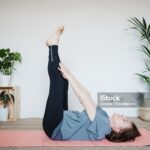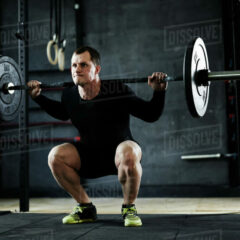https://weightliftingforpower.com/no-equipment-exercise-guides/
No Equipment Exercise Guides
Beginning a fitness journey without expensive equipment is practical; it’s a powerful way to take control of your health and well-being. You won’t just save money on gym memberships; you’ll also gain the freedom to work out wherever and whenever you want. Flexibility and convenience are significant perks, making sticking to your health and wellness goals easier.

Setting realistic fitness goals at home is crucial. It’s tempting to aim high, but starting small helps build consistency. Think about what you want—more strength, endurance, or maybe a bit of both. Setting clear, achievable goals like doing ten push-ups without stopping or mastering a 60-second plank can guide your progress. Write them down or track them in an app to keep yourself accountable.
Consistency is your best friend in fitness. Without the structure of a gym, it might feel challenging to stay on track, but establishing a set schedule makes all the difference. It could be a morning session to jumpstart your day or an evening routine to wind down. Find a time seamlessly fits into your life and hold it sacred—an appointment you wouldn’t dare cancel.

Prepping your mind and space is part of the game. Mental preparation can be as important as the physical workout itself. Clearing a specific spot in your home for your workouts can create a sense of ritual. Whether it’s a corner of your living room or a mat in your bedroom, having a dedicated space sets the tone and puts you in the fitness mindset every time you step into it.
Mastering Bodyweight Basics: Tried and Tested Exercises
Bodyweight exercises are powerful fitness tools that often go unrecognized. Embrace them to unlock your full potential! They pack a ton of benefits without needing a single piece of gear. Foundational movements like push-ups, squats, and planks are key players in boosting strength and endurance. These exercises target major muscle groups, making them great for muscle building and burning calories.


Staying injury-free means getting your form right. Listen, squats with bad form can be a fast track to knee strain, and sloppy push-ups lead to shoulder issues. Engaging the correct muscles and keeping your posture in check is essential. Use mirrors or record yourself to catch any form breakdowns and correct them.
Ramping up the difficulty as you progress keeps your muscles guessing. Once you’re comfortable, add variations like single-arm planks or jump squats to keep things spicy and challenging. You don’t reach peak performance by sticking to the same old, so mix things up regularly to boost your gains.
Nobody’s perfect, especially when starting, but knowing common pitfalls helps apparent setbacks. For example, letting your hips drop during a plank or not lowering your chest ultimately in a push-up. These errors might seem minor but can hinder your progress. Focusing on proper technique not only prevents injuries but maximizes every effort put in.
Crafting a Balanced Routine: Workouts for All Muscle Groups
Creating a balanced workout routine at home involves engaging all your major muscle groups without needing any gym gear. Start by identifying exercises to target different areas of your body. Push-ups for your chest and arms, squats for your lower body, and planks for core strength each serve a purpose.

Incorporating a mix of cardio, strength, and flexibility enhances overall fitness. Cardio exercises like burpees or jumping jacks increase your heart rate, making them great calorie burners. Strength moves build muscles and boosts metabolism, while stretches improve mobility and prevent tightness. Balancing these elements keeps your fitness holistic.
Don’t underestimate the power of rest and recovery in seeing gains. For optimal muscle growth and strength, prioritizing rest days is not just important—it’s essential. Embracing these recovery periods allows your muscles to repair and grow stronger, ultimately leading to better results in your fitness journey. Giving your muscles time to repair enhances your performance and helps prevent injury. Don’t overlook the importance of recovery! Overworking can lead to burnout and injuries, pulling you back from your goals. Listen to your body’s signals and allow a day or two for recovery each week.
Here’s a sample workout plan to kick things off: a mix of exercises three to four times a week focusing on different muscle groups. Start your workout with jumping jacks or high knees to warm up. After that, focus on strength training exercises such as squats and push-ups, and finish with a cool-down stretch. Adjust the intensity as you progress.
Beyond the Basics: Creative No-Equipment Workouts to Challenge You
Once you’ve mastered the basics of bodyweight exercises, it’s time to ramp things up with creative workouts that keep you on your toes. Innovative exercises like animal movements, think bear crawls and crab walks, challenge different muscles, and keep workouts engaging. Mixing these with traditional moves adds a fun twist and tests your strength and coordination.
Functional fitness focuses on movements that mimic real-life activities, improving strength and practical physical abilities. Adding plyometric exercises like jumping lunges or clap push-ups builds explosive power, which is excellent for athletes and anyone looking to boost performance.
Staying motivated can be tricky, especially when working out solo—spice things up by trying new routines or setting mini-challenges. Join online classes or workout communities for a social boost. Celebrating small victories along the way helps keep enthusiasm alive.
Track your progress to see how far and where you want to go next. Whether through journaling or apps, tracking lifts your spirits on tough days. Commit to regular check-ins with yourself to assess goals and tweak routines as needed. With creativity and tools, fitness becomes a lifelong, rewarding journey.
